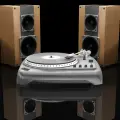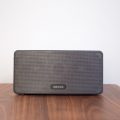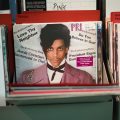Upgrading your record player’s puny built-in speakers unlocks a monumental leap in vinyl enjoyment. But selecting that perfect pair of external speakers can overwhelm amidst the options. Let this article today cut through marketing fluff and audio jargon to reveal your best bets – whether pursuing an all-in-one powered speaker or piecing together a modular stereo setup.
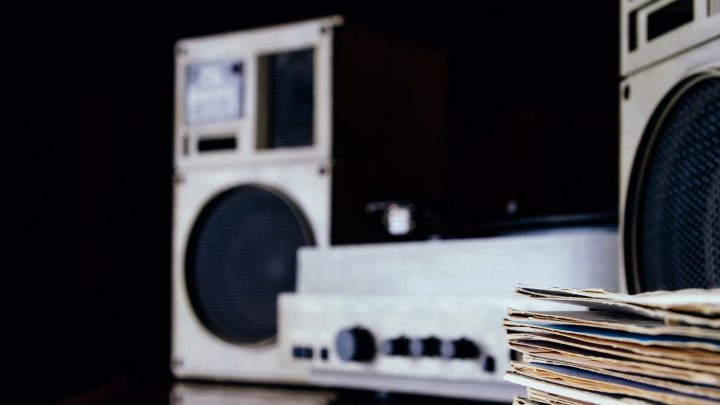
Table of Contents
- Our Speaker Recommendations
- Types of Speakers for Record Players
- Features to Consider When Choosing Speakers
- Setting Up Your Speakers for Optimal Sound
- Fine-Tuning Your Record Player: A Guide to Choosing the Right Speakers
- Best Turntable Speakers FAQs
Our Speaker Recommendations
When selecting speakers for your record player, you’ll want to consider sound quality, size/placement, and budget. The good news is that there are quality speaker options available across a wide range of prices. Here are some top recommendations for elevating your vinyl listening experience:
Klipsch The One II Phono Stereo
The Klipsch The One II Phono Stereo for Turntables & Wireless is a standout choice for vinyl enthusiasts seeking a speaker that marries classic design with modern functionality. Its integrated phono preamp allows for direct turntable connection, eliminating the need for an external preamp and ensuring a pure vinyl listening experience. With superior sound quality, the speaker delivers room-filling audio that perfectly complements the analog warmth of records. The addition of Bluetooth connectivity and a 3.5mm aux input offers versatile listening options, making it more than just a speaker for vinyl lovers. Its portability, easy setup, and the reputable Klipsch brand reputation further enhance its appeal, making it an ideal choice for those who value both sound quality and aesthetic design.
- Pros: All-in-one connectivity, great sound, attractive design
- Cons: Pricey
- BIGGER SOUND: The Three Plus is a powerful 2.1 stereo system biamplified for audiophile resolution and professionally tuned by Klipsch acousticians to deliver a crystal-clear performance with great bass. Featuring dual 2.25” full range drivers and a 5.25” high excursion woofer, The Three Plus is designed to fill larger spaces with bold sound.
- LUXE DETAILS: Incorporating luxury materials such as real wood veneer and tactile switches and knobs, The Three Plus Heritage Inspired tabletop speaker blends the acoustics and classic design legacy of Paul W. Klipsch with the latest technologies available today.
- TURNTABLE READY: Thanks to included Phono/RCA inputs, the Three Plus can be easily connected to your turntable so your favorite records can spin in style.
- GO THE DISTANCE: Stream your favorite playlist or podcast with ease via Bluetooth 5.3 wireless technology that allows up to 40 feet of distance from the source.
- TAKE CONTROL: With The Three Plus, you have the ability to customize your speaker with the Klipsch Connect App. Download today and get access to adjust EQ settings, save your favorite presets, access future firmware updates and more.
- BROADCAST MODE: The newly integrated Broadcast Mode allows you to wirelessly connect 10+ individual Klipsch The Three Plus speakers to create a seamless, encompassing multi-speaker sound experience.
- USB-C READY: Connect your favorite devices via USB-C for playback and reverse charging.
Prices pulled from the Amazon Product Advertising API on:
Product prices and availability are accurate as of the date/time indicated and are subject to change. Any price and availability information displayed on [relevant Amazon Site(s), as applicable] at the time of purchase will apply to the purchase of this product.
Edifier R1280T Powered Bookshelf Speakers
If you’re on a tight budget, the Edifier R1280T powered speakers deliver shocking sound quality for the price. They feature builtin amplification, Bluetooth, and convenient controls right on the side of one speaker.
While they don’t match the bass or soundstage of pricier options, these speakers reproduce vinyl’s warmth and detail far better than you’d expect for under $100. The compact form factor also makes them easy to tuck onto a shelf.
- Pros: Incredible value, decent sound
- Cons: Bass lacks punch, no phono preamp
- 2 x AUX INPUT - Convenient connection to any device that has a 3.5mm headphone output or dual RCA output. Connect to two devices via AUX at the same time, no plugging and switching needed.
- STUDIO SOUND QUALITY - Natural sound reproduction from 13mm silk dome tweeter and 4 inch full range unit
- REMOTE CONTROL - Adjust volume at your figure tips. Bass and treble control located on the side of main speaker.
- CLASSIC WOOD FINISH - High quality MDF wood build finished with wood effect vinyl serves as a great compliment to any home decor.
- 2 YEAR WARRANTY - Guaranteed high quality and reliability with hassle-free parts and labor warranty for two years in USA and Canada.
Prices pulled from the Amazon Product Advertising API on:
Product prices and availability are accurate as of the date/time indicated and are subject to change. Any price and availability information displayed on [relevant Amazon Site(s), as applicable] at the time of purchase will apply to the purchase of this product.
Pro-ject MaiA Integrated Amplifier
For vinyl purists who want a modular, expandable system, pairing the Pro-ject MaiA amplifier with good passive bookshelf speakers is an excellent route.
The MaiA packs a phono input alongside digital connectivity in a striking aluminum chassis. Combined with speakers like the ELAC Debut or KEF Q150, it forms the foundation for stunning vinyl playback that you can build upon over time.
This investment offers the flexibility of using higher-end turntables and speakers down the road while still sounding superb as an entry-level setup.
- Pros: Modular and expandable, sleek design
- Cons: Requires separate passive speakers
Yamaha NS-6490 3-Way Bookshelf Speakers
The Yamaha NS-6490 3-Way Bookshelf Speakers deliver an expansive audio range with their three-way design, offering deep bass and clear highs, ideal for vinyl enthusiasts seeking rich sound quality. They can handle high power for dynamic sound without distortion and easily integrate with various audio setups due to their versatile compatibility.
- Pros: High power handling, versatile compatibility
- Cons: Larger size may not suit smaller spaces, absence of built-in amplification necessitates an external amp for some turntables
- These 3 way speakers can be added anywhere in your home component sound system front or rear speakers, even as auxiliary speakers for another room
- Each speaker enclosure has 3 drivers: An 8 woofer/ a 4 midrange/ a 0.75 dome tweeter that work together to provide an 45Hz to 23Khz frequency response range
- Magnetically shielded to suit home theater applications
Prices pulled from the Amazon Product Advertising API on:
Product prices and availability are accurate as of the date/time indicated and are subject to change. Any price and availability information displayed on [relevant Amazon Site(s), as applicable] at the time of purchase will apply to the purchase of this product.
KEF Q150B Bookshelf Speakers
The KEF Q150B Bookshelf Speakers stand out with their Uni-Q driver array for improved stereo imaging and precise sound, making them perfect for vinyl enthusiasts who value depth and clarity in their listening experience. The refined crossover design enhances natural sound transition, while the elegant aesthetic and compact size suit any decor.
- Pros: Uni-Q Driver array, ensures smooth transitions between frequencies
- Cons: Price point, requires careful placement away from walls to optimize sound quality., might necessitate pairing with a high-quality amplifier for superior audio performance
- The KEF Q150 Bookshelf Speaker is the newest iteration of KEF award-winning Q Series. The Q150 features a new cabinet, sleek new finishes, and an improved 5.25” Uni-Q driver Array.Waterproof : No
- The Q150 contains an enhanced Uni-Q Driver Array designed to smooth out treble frequencies, and reimagined crossovers to provide cleaner and more accurate bass.
- The front port has been moved to the back of the Q150 and internal architecture has been redesigned to reduce internal resonances to improve audio clarity.
- The Q150 is available in sleek matte Black and White vinyl finishes. Nominal Impedance: 8Ω (min.3.7Ω)
Prices pulled from the Amazon Product Advertising API on:
Product prices and availability are accurate as of the date/time indicated and are subject to change. Any price and availability information displayed on [relevant Amazon Site(s), as applicable] at the time of purchase will apply to the purchase of this product.
Types of Speakers for Record Players
When building an audio setup for your record player, you have several speaker types and connectivity options to consider. The turntable speakers you choose play a major role in the listening experience, so let’s explore some of the most common routes vinyl enthusiasts take.
Bookshelf Speakers
Bookshelf speakers represent the most popular and versatile speaker choice for vinyl setups. Typically sold in pairs, these compact speakers are designed to fit on shelves or stands flanking the record player.
The best bookshelf speakers balance clean, accurate sound reproduction with strong bass capabilities. This makes them well-suited for the warmth of vinyl records. Their smaller size also means bookshelf speakers can more easily be worked into small spaces compared to floor standers. For those building an entry-level hi-fi setup, starting with a quality set of bookshelf speakers is highly recommended.
Floor-Standing Speakers
Floor-standing tower speakers output big, bold sound to fill large rooms. Standing over three feet tall, they utilize larger woofers and enclosure space for enhanced bass performance compared to bookshelf models.
Tower speakers do come at a premium cost and require more open floor area for placement. But for vinyl enthusiasts craving full-bodied, emotionally resonant sound, they can be worth the investment.
Powered Speakers
Powered speaker systems integrate the amplifier directly into the speakers themselves. This all-in-one design bypasses the need for a separate stereo receiver for added simplicity.
Some popular powered bookshelf speaker options even have phono preamps built-in for connecting directly to a turntable. No extra gear required.
For those new to hi-fi audio, powered speakers reduce complexity. Modern models provide stunning vinyl sound quality with virtually no setup, though often at a premium price.
Wireless Bluetooth Speakers
Bluetooth connectivity has also expanded the speaker options for streaming vinyl, untethering you from directly wired amplifier setups.
There are Bluetooth speakers that combine wireless functionality with analog wired inputs suitable for turntables. There are also dedicated Bluetooth turntables that transmit to wireless speakers directly for equal parts modern convenience and vinyl warmth.
Just keep in mind potential sound degradation and latency over Bluetooth remain a factor. So audiophiles may still prefer a traditional analog audio chain.
Features to Consider When Choosing Speakers
Selecting the right speakers for your record player involves weighing several key factors from sound reproduction to compatibility to your budget. Let’s explore top features to consider so you can make an informed decision.
Sound Quality
As the conduit for your vinyl listening experience, sound quality sits paramount when evaluating speakers. Seek out models offering clear mids and highs to allow subtle textures and spacious details to sparkle.
You’ll also want speakers able to reproduce the warmth and low end found in records. This is where larger driver sizes and woofers come in handy for fuller bass response. Plots of the speaker’s frequency range should ideally stretch down to at least 50-60 Hz to convey vinyl’s wealth of sonic tones.
Beyond frequency response, low distortion and sufficient wattage handling provide headroom for dynamic passages free of strain or harshness. Carefully listen to potential speakers to ensure satisfying depth, imaging, and tonal balance suiting your musical tastes.
Connectivity and Compatibility
You’ll want speakers offering flexible connectivity options tailored for turntable and phono cartridge signals. Many powered speakers now include phono preamps to directly accept turntable inputs sans extra equipment.
For bookshelf speakers, look for speaker wire terminals and compatibility with analog stereo receivers or dedicated phono preamps between your deck and speakers. Opting for an AV receiver gives you capacity to incorporate other entertainment sources down the road.
Some wireless speakers also now include analog wired ports alongside Bluetooth connectivity – providing versatile pairing versatility with both vinyl and digital streaming sources.
Size and Placement
The size and placement needs of your room should factor into potential speaker choices. Bookshelf speakers afford flexibility for apartment dwellers and smaller spaces compared to larger floor standers. Measure intended speaker locations to ensure the footprint works ergonomically.
Bass response also varies with a speaker’s positioning from walls which can accentuate low frequencies. Be prepared to experiment with toe-in angling and distance from room boundaries to optimize sound. The good news is quality speakers tuned for natural tonal balance typically translate well across diverse room conditions.
Budget
Lastly, settle on a speaker budget aligned with your expectations. While it’s possible to find powered speakers under $100, you often sacrifice bass impact and detail compared to pricier models. Be ready to spend at least $250-500 for well-rounded speakers that unlock vinyl’s spacious dynamics.
Of course speaker costs scale exponentially moving into high-end audiophile territory, especially with exotic floor standers. But rest assured very capable, musical speakers exist even just north of entry-level budgets. Let your ears guide you to quality sound representing good value.
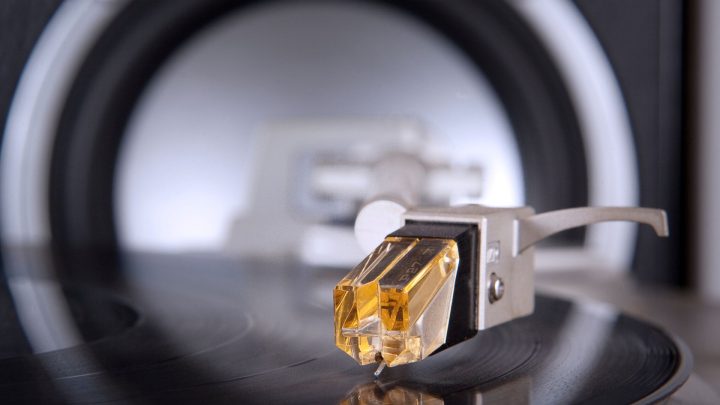
Setting Up Your Speakers for Optimal Sound
Congratulations on your new record player and speakers! Properly setting up your system can make a noticeable difference in reaching vinyl nirvana. Let’s explore speaker placement, calibration tips, and connectivity best practices.
Speaker Placement
Start by carefully situating your speakers relative to your seating position. As a rule of thumb, form an equilateral triangle with your speakers placed 6-8 feet apart and 6-8 feet from your primary listening spot. This allows the audio to integrate seamlessly for a spacious stereo image.
Angle the speakers inward so they directly face your ears, known as toe-in placement. Tweak the degree of inward angle until you achieve a centered sonic image and the high frequencies shine. Bass also varies greatly depending on distance from walls, so don’t be shy experimenting to find the optimal balance.
On bookshelf speakers, placing your ear at tweeter level when seated typically aligns the drivers and tweeters for proper sound dispersion. And isolating speakers from surfaces via stands helps sharpen transient response.
Calibration and Testing
Once set up, calibrating speaker output levels and testing the soundscape are next. Play a mono recording and adjust speaker levels until central imaging is anchored. The tonal quality across both speakers should match closely – if not, try slightly adjusting placement.
Next, play music across various genres to tune deeper into the sound. Stand at different room locations to test sweet spot coverage and bass consistency. Make finer positional tweaks to smooth any exaggerated frequencies and ensure balanced reproduction.
Connectivity Considerations
Wiring up your vinyl gear pathway also warrants care. With separate components like turntables and receivers, choose high-quality interconnect cables allowing unfiltered transfer between your analog gear. And connect powered speakers to wall outlets separated from other electronics to minimize noise interference.
For wireless streaming, position Bluetooth speakers within reasonable range and clear line of sight access to your transmitter to prevent signal drops which can disrupt playback. Also validate the automatic input sensibly defaults to vinyl when the record starts spinning.
Once these connectivity configurations are set, relax and let your perfectly placed speakers immerse you within the vinyl experience. Have fun exploring new recordings and let the musical relationship between your ears and speakers organically mature over time.
Fine-Tuning Your Record Player: A Guide to Choosing the Right Speakers
Ultimately, you want accurate and balanced sound reproduction across mids, highs and lows reflecting vinyl’s treasured warmth. Well-rounded frequency response with tight bass and clear detailed treble prevents a skewed or muddy listen.
And don’t underestimate small ways to optimize performance and perceivable quality bumps through careful speaker positioning, level calibration and connectivity considerations covered earlier.
Let your musical tastes and listening environment needs steer you towards speakers sporting natural cohesive tonality. And allow some flexibility trying out speakers firsthand from local hifi shops when possible.
May the vinyl vibes commence as your speakers translate grooves into soul stirring sound.
Check these posts out:
- 3 Best Headphones for Vinyl in 2024
- Maximize Your Vinyl Experience with a Tube Phono Preamp: 10 Top-Rated Options
Best Turntable Speakers FAQs
What speakers should I use for record player?
Choose speakers that match your record player’s output and your listening preferences. For rich, detailed sound, consider powered speakers with built-in amplifiers for ease of use, or passive speakers paired with a quality amplifier for more customization. Look for models known for their sound clarity and depth. Consider room size when selecting speaker size and power to ensure a balanced sound experience without overwhelming the space.
How do I get the best sound from my record player?
Ensure it’s properly set up with a quality cartridge and stylus, use a high-performance preamp, and connect it to quality speakers or an amplifier. Place your turntable on a stable, level surface to reduce vibrations. Regularly clean your vinyl and stylus to prevent dust buildup. Fine-tune the tracking force and anti-skate settings for optimal needle tracking and minimal distortion.
Do record players need specific speakers?
Record players don’t require specific speakers, but matching them with speakers that complement vinyl’s warm, analog sound can enhance the listening experience. Powered speakers are convenient for their built-in amplification, while passive speakers offer customization through separate amplifiers. Choose speakers based on their audio quality, your room size, and whether you prefer a simple setup or the flexibility to tweak and upgrade components over time.





